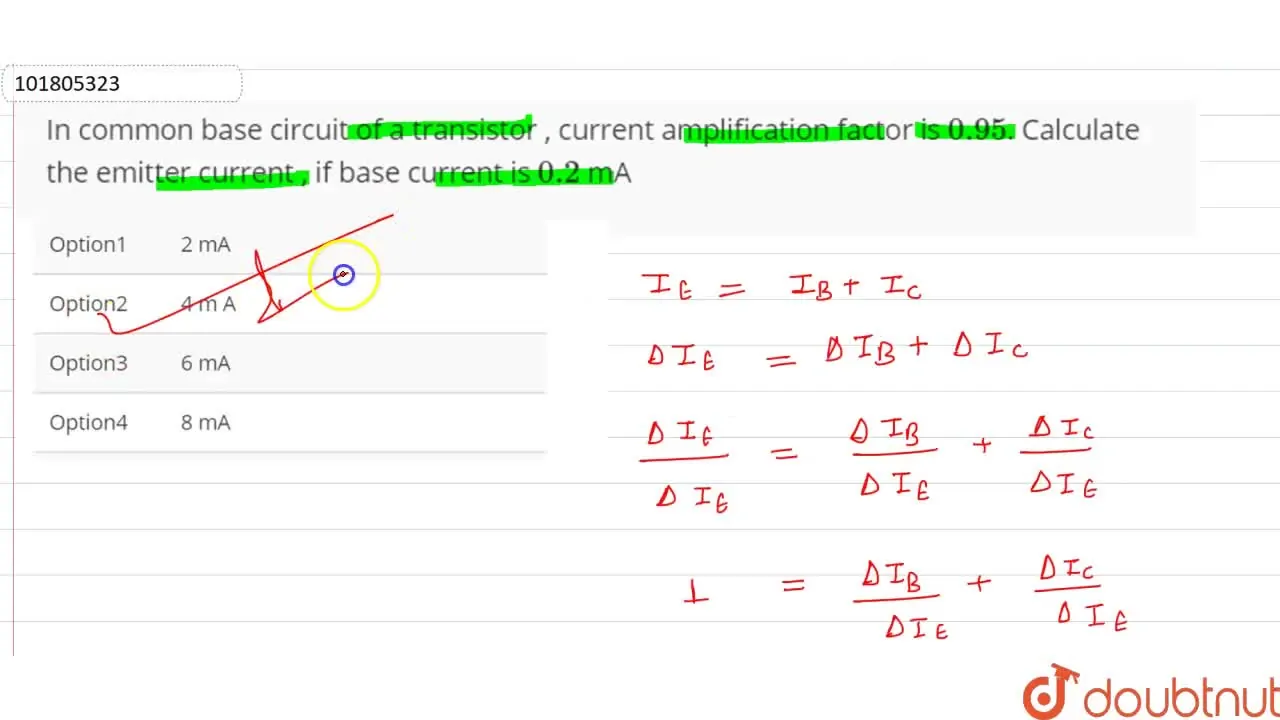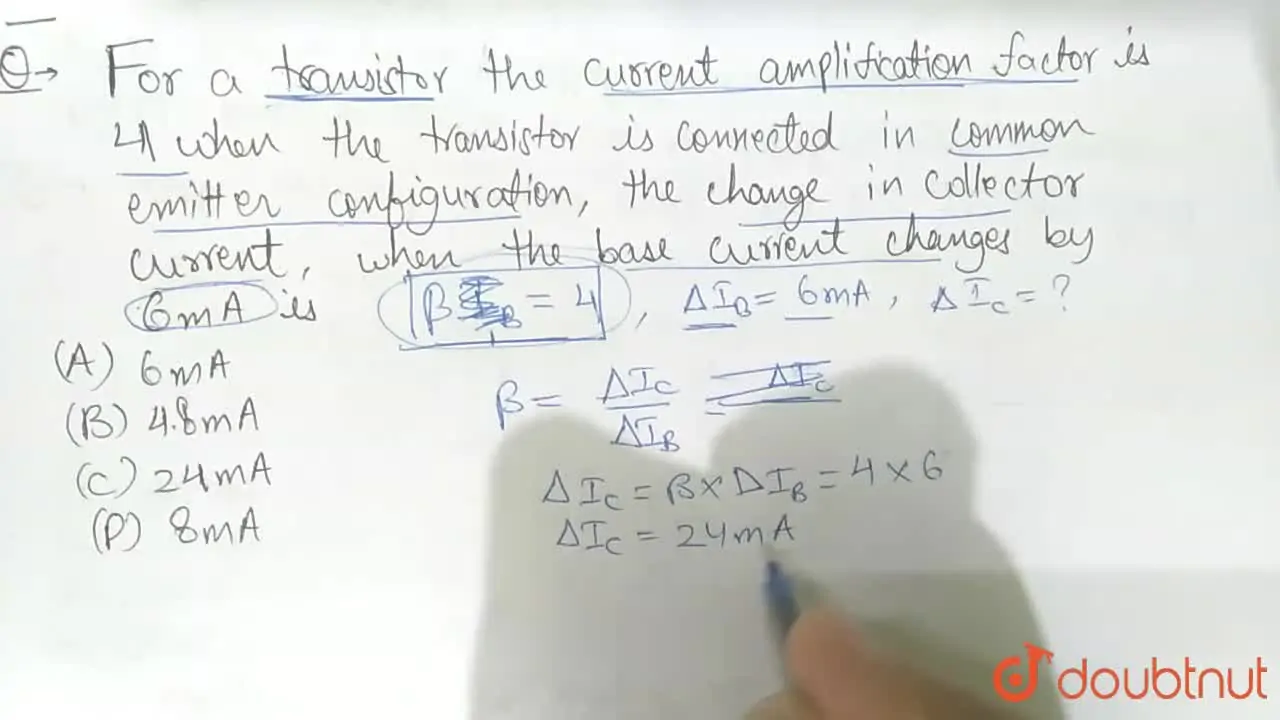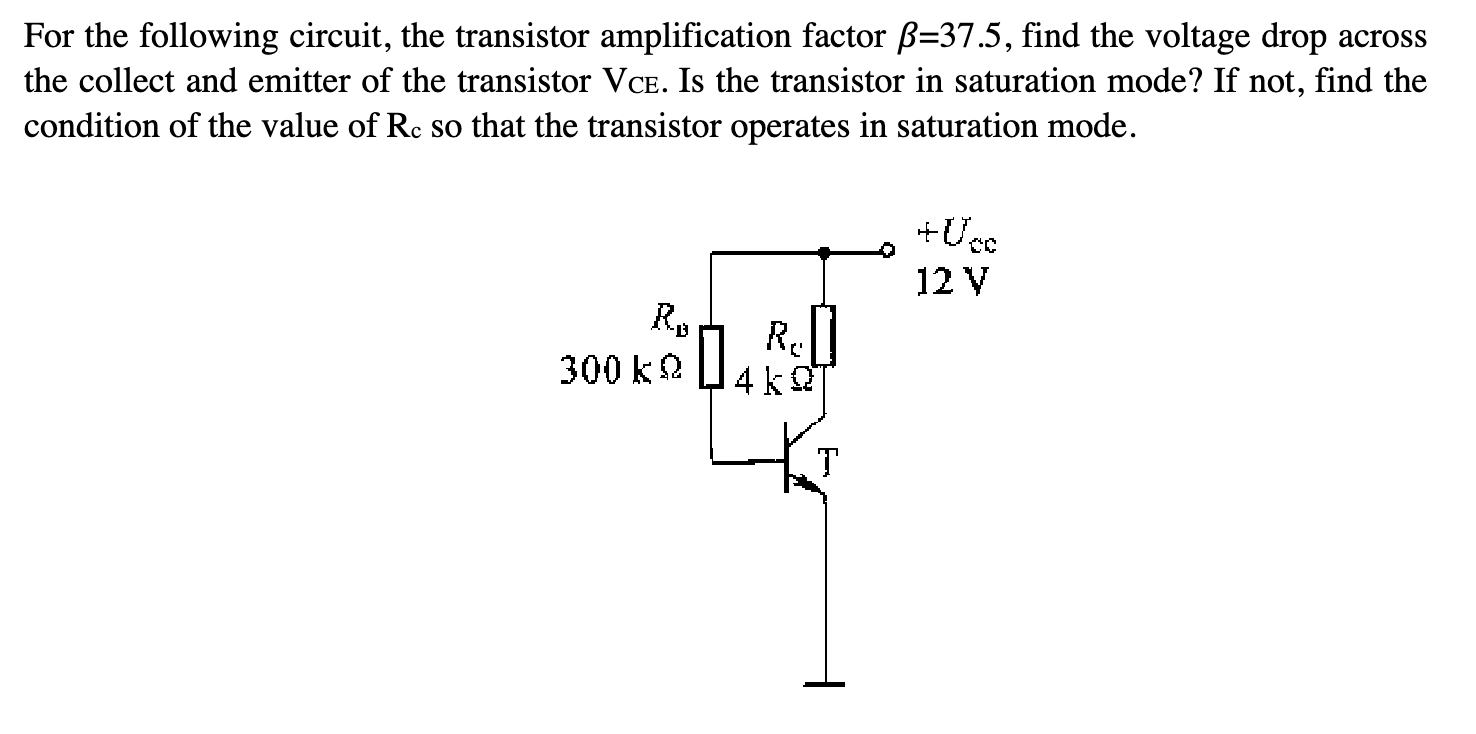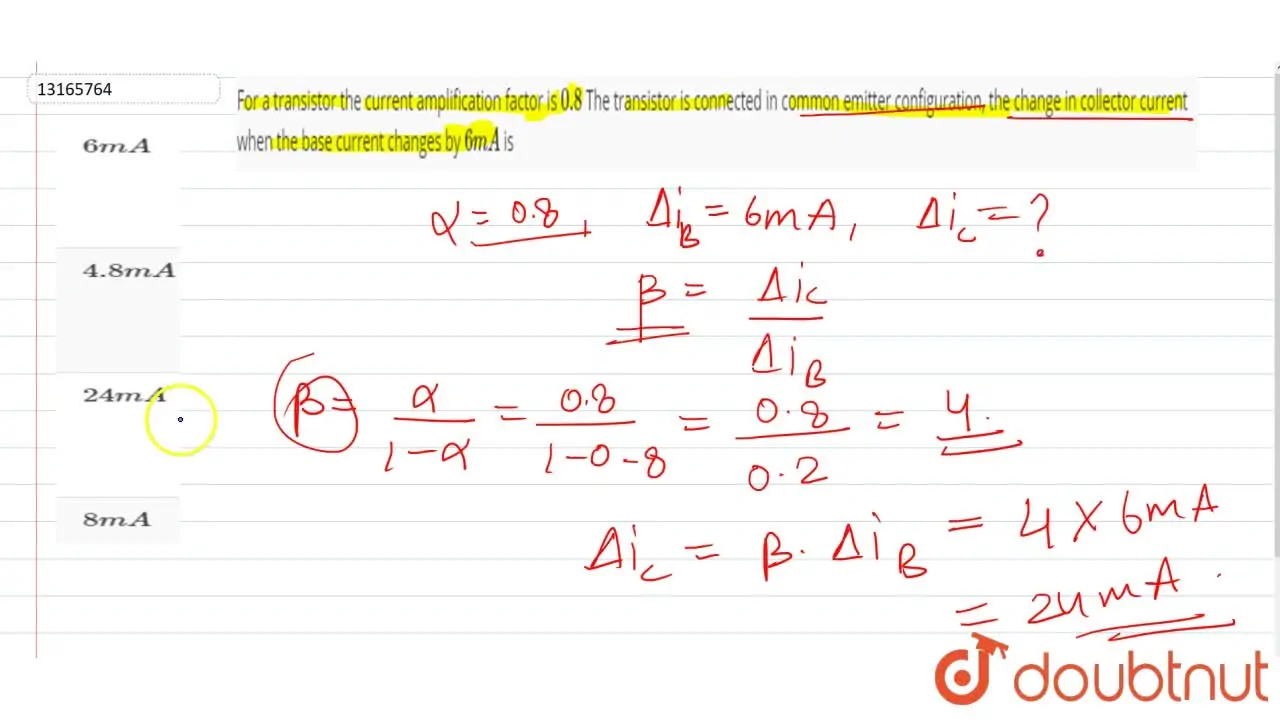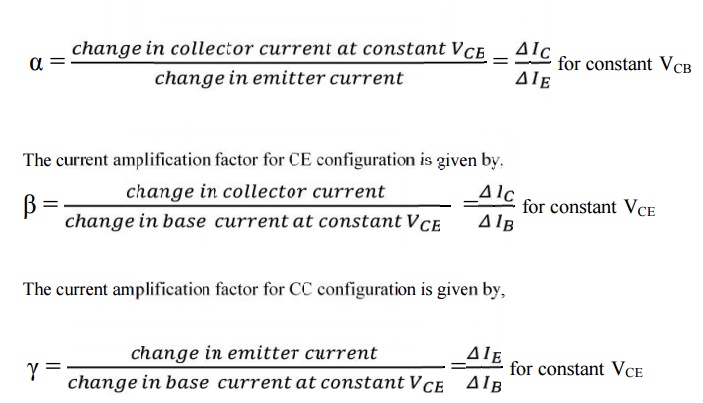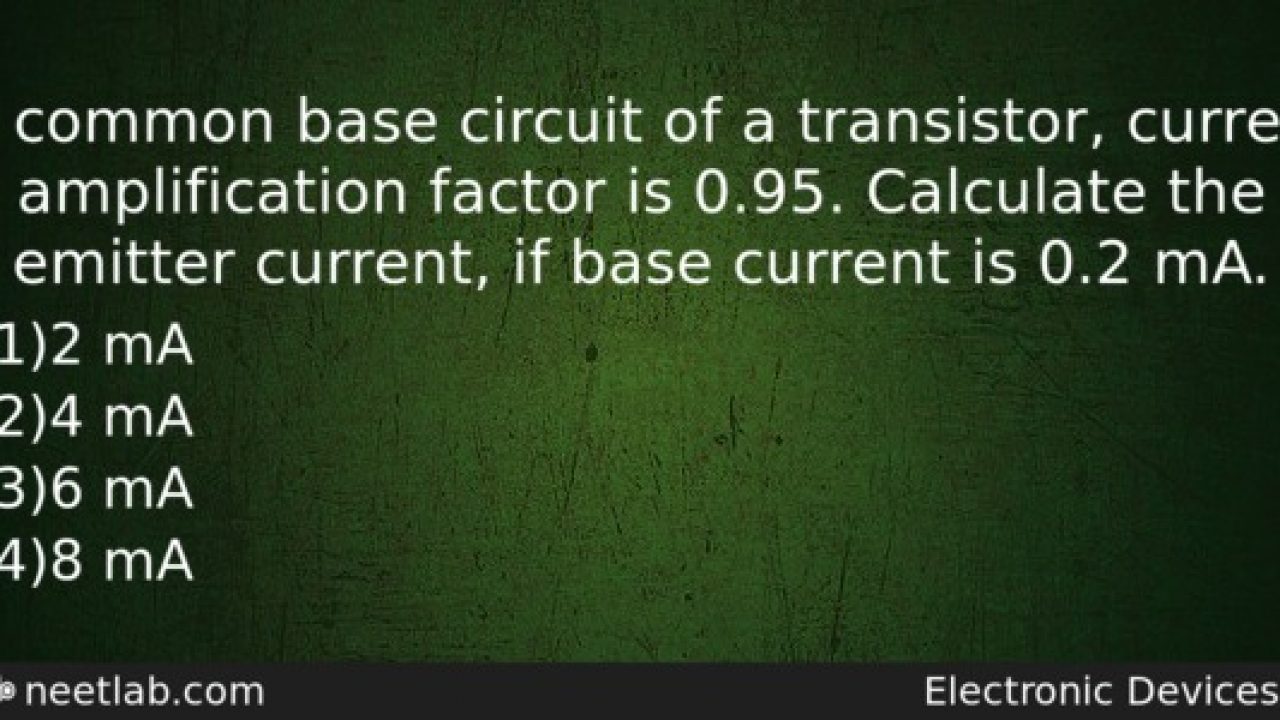
For a transistor, the current amplification factor α is 0.8. The transistor is connected in common emitter configuration. The change in collector current, when the base current changes by 6 mA isA.

23. A transistor has a current amplification factor of 60. In a CE amplifier, input resistance is 1 kS2 and output voltage is 0.01 V. The transconductance is (in S units) (1)
What do you understand by amplification? Make the diagram of a p-n-p transistor common amplifier - Sarthaks eConnect | Largest Online Education Community
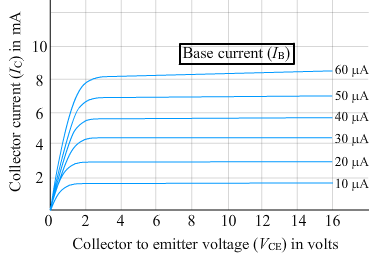
Draw a circuit diagram of a transistor amplifier in CE configuration. Define the terms:(i) Input resistance and (ii) Current amplification factor. How are these determined using typical input and output characteristics? -

For a common emitter configuration alpha and beta have their usual meanings, the incorrect relationship between alpha and beta is:frac{1}{alpha } = frac{1}{beta } + 1alpha = frac{beta }{{1 - beta }}alpha =

Common Emitter Connection (or CE Configuration) - Input & Output Characteristic Curve - Circuit Globe
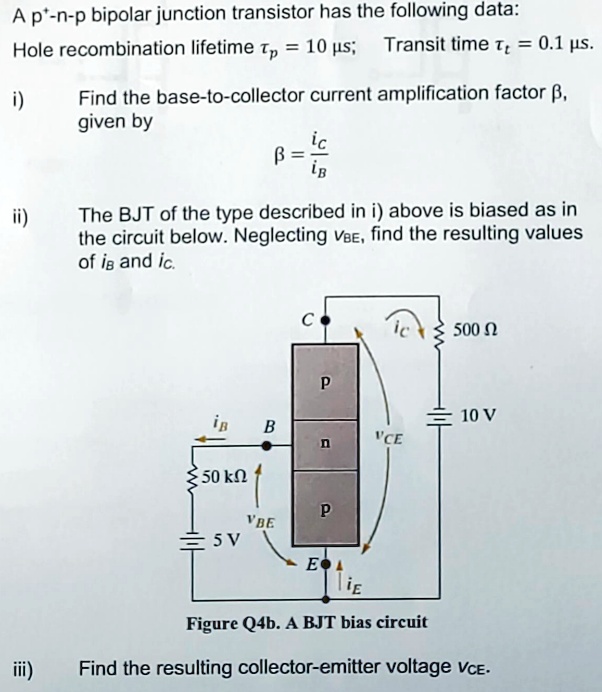
SOLVED: A p*-n-p bipolar junction transistor has the following data: Hole recombination lifetime Tp=10s; Transit time=0.1s i) Find the base-to-collector current amplification factor given by iB i) The BJT of the type
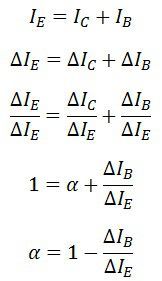
What is Collector Base Connection (CB Configuration)? - Definition, Current Amplification Factor & Characteristic Configuration - Circuit Globe
![In the common base circuit of a transistor ,current amplification factor is 0.95. Calculate the emitter current if base current is 0.2 \\[mA\\]A) 2 \\[mA\\]B) 4\\[mA\\]C) 6\\[mA\\]D) 8\\[mA\\] In the common base circuit of a transistor ,current amplification factor is 0.95. Calculate the emitter current if base current is 0.2 \\[mA\\]A) 2 \\[mA\\]B) 4\\[mA\\]C) 6\\[mA\\]D) 8\\[mA\\]](https://www.vedantu.com/question-sets/db76b399-1461-42cf-932a-3d549061cc273693829822599464912.png)
